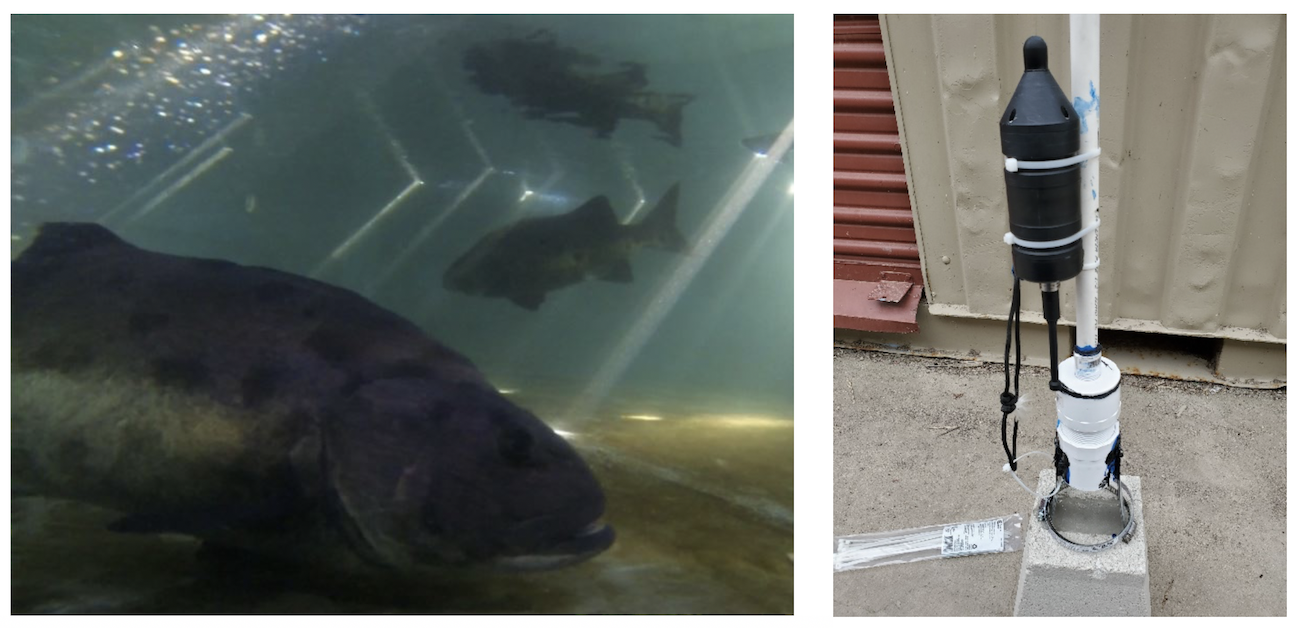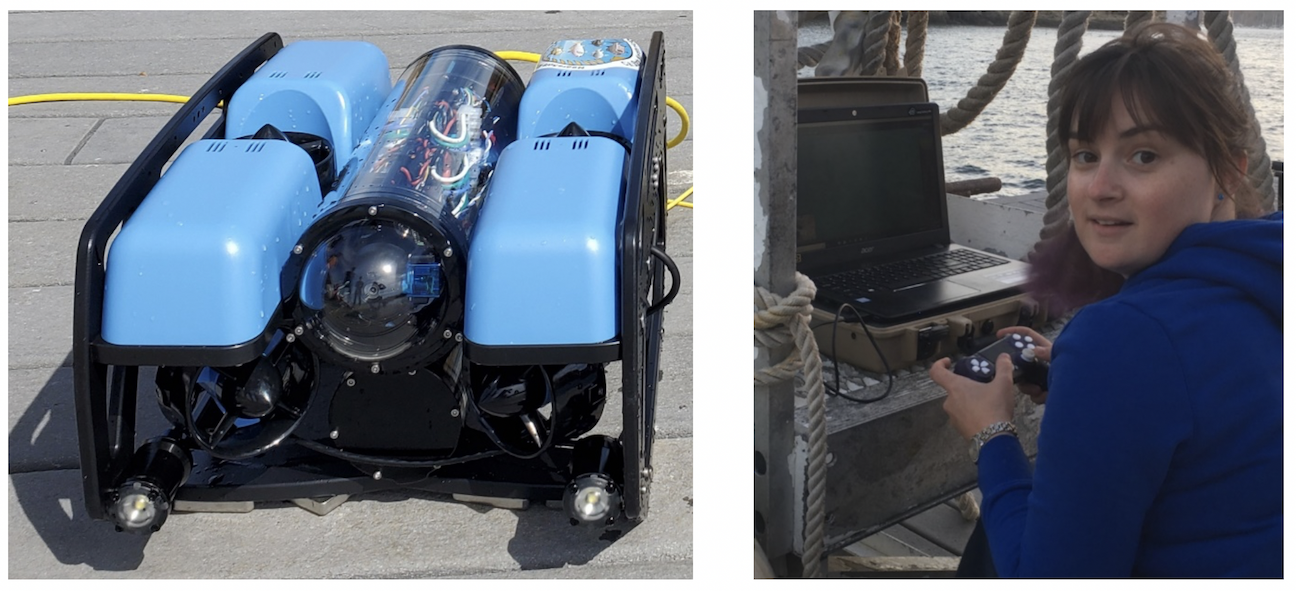By: Elizabeth Burns
Hi, my name is Elizabeth! I just finished my first year of my master’s program at California State University, Northridge and I’m a summer Wrigley Fellow at Catalina Island. For my master’s thesis I am studying the Giant Sea Bass. The Giant Sea Bass is the apex predator of the California kelp forest, research has shown that these fish can live over 76 years of age, grow over 800 pounds, and can reach lengths over 7 feet. Unfortunately, we don’t know much about these fish since in the early 1900’s they were severely over fished, this led them to being placed as critically endangered on the ICUN’s red list.

These are pictures from the 1930’s showing Giant Sea Bass caught off of Santa Catalina coast, from the SCIF archives. https://www.islapedia.com/index.php?title=Black_Sea_Bass
These are pictures from the 1930’s showing Giant Sea Bass caught off of Santa Catalina coast, from the SCIF archives. https://www.islapedia.com/index.php?title=Black_Sea_Bass
Due to increasing efforts over the years, Giant Sea Bass populations are slowly on the rise. This has allowed us to uncover some of the secrets these giants still hide. My research focuses on two of the biggest mysteries of the Giant Sea Bass, their courtship behaviors and sound production. No body has ever described or documented these two behaviors before. Understanding these behaviors are crucial to helping conserve the species. To do that I have some amazing instruments to record these behaviors.
Divers that have had the pleasure of diving with Giant Sea Bass will sometimes talk about the sound giants have been hears to make. Giants we think make 2 different sounds to communicate with each other. There is a sort of standard “Boom” to alert other fishes and organisms to their presence and a “snare drum” like sound for reproduction to entice the ladies. To record giants’ sounds in the environment we are using an underwater microphone, called a hydrophone. In 2015 my lab was able to capture three Giant Sea Bass and keep them in a tank to observe them. From this we were able to capture their sounds in the tanks we then started to spawn recently.
To observe the giant’s courtship, we are also utilizing our giants in the tanks to get preliminary data for behavior we should see in the wild. The problem is giants are very romantic and like to start their courtship behavior at sunset and continue into the evening. These low light conditions make it tough for diving and observing their court ship so to mediate this we have a little helper named Bruce. Bruce is my ROV, remote operated vehicle that is a submersible. Bruce is rated to 300 meters and I have over 50 meters tether to drive it down to film the giants. I use a computer and a PS4 controller to drive Bruce.
With these two instruments my lab and I are very confident that we will be able to observe and document all these behaviors and be the first to do so in the wild. These behaviors will help us understand Giant Sea Bass and lead to better conservation of the species.


